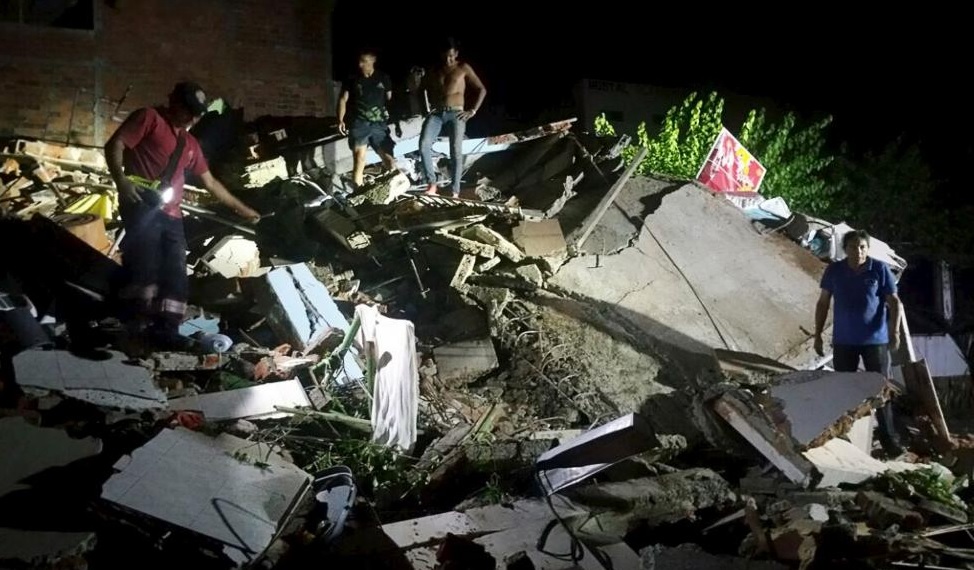GUAYAQUIL, Ecuador, (Reuters) – Ecuador’s strongest earthquake in decades killed at least 77 people and injured hundreds more, devastating coastal towns and sending residents fleeing to higher ground on Saturday night.
The 7.8 magnitude earthquake struck off Ecuador’s Pacific coast and was felt hundreds of miles away in the capital of Quito as well as in the large commercial city of Guayaquil where rubble lay strewn in the streets and some buildings were cracked or partially collapsed.
A bridge in the city collapsed on top of car, crushing it.
A state of emergency was declared in six provinces and the government said the death toll was likely to rise.
“It was terrifying, we were all scared and we’re still out in the streets because we’re worried about aftershocks,” said Guayaquil security guard Fernando Garcia. “Everything is damaged.”
The western coastal areas nearest the quake were worst affected, including Pedernales, which draws tourists with beaches lined with palm-trees, and nearby Cojimies.
“There are villages that are totally devastated,” Pedernales’ major Gabriel Alcivar, said in a radio interview.

“What happened here in Pedernales is catastrophic.”
Ramon Solorzano, 46, a car parts merchant in the city of Manta, said he was getting ready to leave the city with his family.
“Most people are out in the streets with backpacks on, heading for higher ground,” he said, speaking in a trembling voice on a WhatsApp phone call. “The streets are cracked. The power is out and phones are down.”
President Rafael Correa declared a national emergency and cut short a trip to Italy to return to the Andean country of 16 million people.
“Everything can be rebuilt, but lives cannot be recovered, and that’s what hurts the most,” he told Ecuador’s state television channel from Rome.
Parts of the capital were without power or telephone services for several hours but the city government said those services had been restored and there were no reports of casualties in the city.
The government described it as the worst quake in the country since 1979 when 600 people were killed and 20,000 injured, according to the United States Geological Survey.
A tsunami warning was lifted on Saturday night but coastal residents were encouraged to seek higher ground in case tides rise.
Social media pictures showed a collapsed bridge in Guayaquil and minor damage to the lobby of a hotel, as well as images of a collapsed control tower at an airport in the city of Manta.
“At first it was light, but it lasted a long time and got stronger,” said Maria Jaramillo, 36, a resident of Guayaquil, describing windows breaking and pieces falling off roofs.
“I was on the seventh floor and the light went off in the whole sector, and we evacuated. People were very anxious in the street … We left barefoot.”
State officials said the OPEC member’s oil production was not affected by the quake but that the principal refinery of Esmeraldas, located near the epicenter, had been halted as a precaution.
Across the Pacific in Japan, a 7.3 magnitude tremor struck Kumamoto province early Saturday, killing at least 32 people, injuring about a thousand and causing widespread damage, in the second major quake to hit the island of Kyushu in just over 24 hours. The first, late on Thursday, killed nine.
